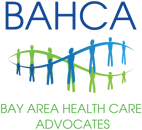
If shelter-in-place seemed to come with a road map (what to do, not to do, and how to stay reasonably safe), the re-opening feels a bit more like the early days of Google maps. You can see your final destination, but the suggested route seems to have you driving all around it, leaving you uncertain as to the best path for getting there.
Several states, including California, issued guidance to businesses on how to re-open, in some cases complete with checklists and forms requiring state approval prior to re-opening. But there are no official forms or checklists to help you decide whether or not to take part in any aspect of re-opening, whether that’s entering a store or dining in a restaurant.
As one Florida journalist said in describing the safety of gyms, “Your workout will be as safe as you choose to make it.” Likewise, the degree to which you participate in re-opening activities and the safeguards you establish are up to you. Everyone will have a different risk tolerance for themselves. To help you decide what best meets your needs, listed below are facts we know about the virus and what you can do help yourself stay safe.
What We Know
- It takes inhaling about 1000 (500 – 5000) virus particles to cause an infection.
- One minute of speaking releases about 1000 virus particles. The louder the person is speaking (yelling, singing), the more particles are released.
- The main sources of infection are home (infected people bringing the virus home to family members), work place, public transportation, social gatherings, and restaurants.
- If the speaker and listener are both wearing masks, the risk of infection goes down.
- The longer someone infected is in an enclosed room, the more virus particles are released through breathing. The longer someone uninfected is in a room, the more virus particles are inhaled through breathing.
- Being outdoors decreases the risk of infection. According to Erin Bromage, Professor of Biology at the University of Massachusetts Dartmouth, "The effects of sunlight, heat and humidity on viral survival, all serve to minimize the risk to everyone when outside."
- At least 44% of all infections are transmitted from people who are asymptomatic (no fever, no symptoms). Many people never show symptoms and are shedding the virus throughout their illness.
- As more people venture out and more parks, businesses, and entertainment venues open, the greater the change of infection.
What You Can Do
- If you have a fever or any possible COVID-19 symptoms, such as chills, loss of smell, or extreme fatigue, stay home
- Continue to shelter-in-place if you are elderly, have underlying health conditions, or someone in your home has either tested positive for COVID-19 or been in contact with someone who has the virus.
- When you are outside your home, maintain a social distance of at least six feet (the equivalent length of two shopping carts)
- Wear your mask, and make sure it is covering your nose and mouth
- Wash your hands before you leave home, when you leave a business, and as soon as you get home. Remember, this means washing your hands for twenty seconds – two rounds of the Happy Birthday song.
- If soap and water aren’t available while you’re out, use hand sanitizer (also for twenty seconds) and/or wear disposable gloves that you throw away before getting back into your car. (Note, if using disposable gloves you have to change them every time you touch a possibly contaminated surface. Wearing the same pair of gloves all day does absolutely nothing to reduce infection).
- Use your knuckle to tap out information on electronic devices like payment machines or ATM’s or to push the elevator buttons.
- When dining out, pick up curbside and eat it outdoors at a physically distanced, open air patio seat, or take it to a local park to eat, instead of sitting in the restaurant.
- If you feel you must eat inside a restaurant, take steps to minimize risk by locating a restaurant that is taking steps to lower risk, such as:
- limiting the number of people inside the business
- encouraging social distancing while inside
- using disposable menus and single use table condiments
- checking employees’ temperatures and symptoms every day
- requiring masks for staff and customers (except when eating).
- recognize that even sitting 6 feet away from other restaurant goers does not eliminate risk. This study of restaurant spread demonstrates spread through air conditioning.
- Avoid indoor church when singing is permitted. Singing in church services is a high risk activity as shown by the Washington choir study in which 87% of the choir was infected by 1 member, despite 6' distancing and copious hand sanitizer use.
- Opt for virtual church as the safest option
- If virtual isn't sufficient for you, opt for outdoor drive-in church or outdoor physically distanced church without singing as the next safest option
- If you must attend church indoors, urge your church to refrain from singing
- In all scenarios, avoid sharing of offering trays and sharing of communion trays, shared drink or food.
Most importantly:
Continue stay-in-place for all but essential activities and wear a mask when you leave home. The COVID-19 pandemic is not over. The above tips are ways of reducing your risk, but none are guaranteed to keep you 100% safe.Each person will have a different personal risk tolerance. Recognizing the steps you take to minimize risk will help not only you, but others in your family and your community at large.



.gif?width=200&name=NAHAC-Member-Badge200x112+(1).gif)


